new posts in all blogs
Viewing: Blog Posts Tagged with: New York Review of Books, Most Recent at Top [Help]
Results 1 - 6 of 6
How to use this Page
You are viewing the most recent posts tagged with the words: New York Review of Books in the JacketFlap blog reader. What is a tag? Think of a tag as a keyword or category label. Tags can both help you find posts on JacketFlap.com as well as provide an easy way for you to "remember" and classify posts for later recall. Try adding a tag yourself by clicking "Add a tag" below a post's header. Scroll down through the list of Recent Posts in the left column and click on a post title that sounds interesting. You can view all posts from a specific blog by clicking the Blog name in the right column, or you can click a 'More Posts from this Blog' link in any individual post.
 The New York Public Library (NYPL) has acquired the archive of the New York Review of Books magazine. This publication garnered great fame for featuring pieces by several beloved writers such as W. H. Auden, Joan Didion, and Norman Mailer.
The New York Public Library (NYPL) has acquired the archive of the New York Review of Books magazine. This publication garnered great fame for featuring pieces by several beloved writers such as W. H. Auden, Joan Didion, and Norman Mailer.
The NYPL team estimates that the materials will require about three years to fully process before it can be made available to researchers. Some of the notable items from the archive include letters, telegrams, emails, drafts, manuscripts, and galleys.
Here’s more from the press release: “The archive includes a wealth of correspondence between editors Silvers and Epstein and The Review’s wide range of authors over the magazine’s 50-year existence. This outstanding correspondence provides unique evidence of intellectual life in the United States in the second half of the 20th century. In addition, letters to The Review detail the lively literary disputes that have long given the magazine its character of intensity and passion for factual correctness. The archive shows the evolution of the magazine as it took a vocal role in opposition to both the Vietnam War and later wars in Iraq.”

By: Kathy Mirkin,
on 12/26/2014
Blog:
The Write Words
(
Login to Add to MyJacketFlap)
JacketFlap tags:
HarperCollins,
Maurice Sendak,
Scholastic,
Publishers Weekly,
Perks of Being a Wallflower,
Secret Garden,
New York Review of Books,
Brown Girl Dreaming,
Miss Peregrine's Home,
Add a tag

With so many wonderful books published in 2014, it's hard to know where to begin in making reading choices. One easy way to discover amazing stories is to take a look at
Publishers Weekly round-up of top children's book editors 2014 picks (only books not published by their own company). In this article you'll discover the books the editors wish they'd snagged before another publisher got to them first, how they learned about the books, and why they love them. Their favorites also include some older classics.
The picks include:
The Bunker Diary; The Iridescence of Birds; Grasshopper Jungle; El Deafo; Blue Lily, Lily Blue;
The Strange and Beautiful Sorrows of Ava Lavender; The Winner’s Curse; Half Bad; Mr. Rabbit and the Lovely Present; Charlie and the Chocolate Factory; Brown Girl Dreaming; The Perks of Being a Wallflower; The Glassblower’s Children; Sideways Stories from Wayside School;
Miss Peregrine’s Home for Peculiar Children; The Storm Whale; The Girl Who Circumnavigated Fairyland in a Ship of Her Own Making; Wild Rover No More; The Secret Garden; Egg & Spoon; and
Grasshopper Jungle.A few quotes from the piece:
David Levithan, Scholastic.
Grasshopper Jungle by Andrew Smith
. "Grasshopper Jungle is a messy, repetitive, horny, ridiculous novel with a main character who will strain your sympathies about as far as they can go. And I love it for all of these qualities, and for the exuberance of its daring."
Nicholas During, New York Review Books. Mr. Rabbit and the Lovely Present by Charlotte Zolotow, illustrated by Maurice Sendak. "There’s something rather melancholy about the story in combination with Sendak’s illustrations, and, don’t ask why, I find it’s a bit of sadness that makes the best children’s books."
Brittany Pearlman, Macmillan Children's Publishing Group.
Blue Lily, Lily Blue by Maggie Steifvater. "There’s a line in the book where the main character, Blue, reflects about herself and her four male companions (the Raven Boys): “We were all a little bit in love with each other”; and that’s exactly how I feel about every one of the characters. The magical realism and fantasy make the story truly enchanting, but it’s always grounded in character so that you feel completely immersed."
T.S. Ferguson, Harlequin Teen.
Half Bad by Sally Green
. "Half Bad by Sally Green has obvious comparisons to the world of Harry Potter, but the story unfolds in such a uniquely compelling way that I couldn’t put it down. I loved the themes of racism, genocide, and terrorism as viewed through a fantasy lens."
Liz Herzog, Scholastic. Miss Peregrine’s Home for Peculiar Children by Ransom Riggs. "When I brought the book home and read it, I loved the way Riggs had so artfully built a rich and engaging world all from a collection of found photos. It made me think about where stories come from, and how pictures can be a powerful jumping-off point for the imagination."
Megan Barlog, HarperCollins Children’s Books. The Girl Who Circumnavigated Fairyland in a Ship of Her Own Making by Catherynne M. Valente. "This book takes the best elements of fairytale romps like
Alice in Wonderland and
The Wizard of Oz and transforms them into a tale of daring adventure."
Be sure to visit
Publishers Weekly for the complete article.
What were your favorite books of 2014 for children?
Hope you enjoyed this post! To be notified of future updates, use the subscription options on the right side bar.

By: Samuel Blum,
on 11/19/2014
Blog:
OUPblog
(
Login to Add to MyJacketFlap)
JacketFlap tags:
review,
Books,
Philosophy,
*Featured,
new york review of books,
Luciano Floridi,
4th Revolution,
John Searle,
World Philosophy Day,
Add a tag
In the October 9th edition of the New York Review of Books, philosopher John Searle criticized Luciano Floridi’s The Fourth Revolution, noting that Floridi “sees himself as the successor to Copernicus, Darwin, and Freud, each of whom announced a revolution that transformed our self-conception into something more modest.” In the response below, Floridi disputes this claim and many others made by Searle in his review of The Fourth Revolution.
John Searle’s review of The Fourth Revolution – How the Infosphere is Reshaping Human Reality (OUP, 2014) is astonishingly shallow and misguided. The silver lining is that, if its factual errors and conceptual confusions are removed, the opportunity for an informed and insightful reading can still be enjoyed.
The review erroneously ascribes to me a fourth revolution in our self-understanding, which I explicitly attribute to Alan Turing. We are not at the center of the universe (Copernicus), of the biological kingdom (Darwin), or of the realm of rationality (Freud). After Turing, we are no longer at the center of the world of information either. We share the infosphere with smart technologies. These are not some unrealistic AI, as the review would have me suggest, but ordinary artefacts that outperform us in ever more tasks, despite being no cleverer than a toaster. Their abilities are humbling and make us revaluate our unique intelligence. Their successes largely depend on the fact that the world has become an IT-friendly environment, where technologies can replace us without having any understanding or semantic skills. We increasingly live onlife (think of apps tracking your location). The pressing problem is not whether our digital systems can think or know, for they cannot, but what our environments are gradually enabling them to achieve. Like Kant, I do not know whether the world in itself is informational, a view that the review erroneously claims I support. What I do know is that our conceptualization of the world is. The distinction is trivial and yet crucial: from DNA as code to force fields as the foundation of matter, from the mind-brain dualism as a software-hardware distinction to computational neuroscience, from network-based societies to digital economies and cyber conflicts, today we understand and deal with the world informationally. To be is to be interactable: this is our new “ontology”.
The review denounces dualisms yet uncritically endorses a dichotomy between relative (or subjective) vs. absolute (or objective) phenomena. This is no longer adequate because today we know that many phenomena are relational. For example, whether some stuff qualifies as food depends on the nature both of the substance and of the organism that is going to absorb it. Yet relativism is mistaken, because not any stuff can count as food, sand never does. Likewise, semantic information (e.g. a train timetable) is a relational phenomenon: it depends on the right kind of message and receiver. Insisting on mapping information as either relative or absolute is as naïve as pretending that a border between two nations must be located in one of them.
The world is getting more complex. We have never been so much in need of good philosophy to understand it and take care for it. But we need to upgrade philosophy into a philosophy of information of our age for our age if we wish it to be relevant. This is what the book is really about.
Feature image credit: Macro computer citrcuit board, by Randy Pertiet. CC-BY-2.0 via Flickr.
The post Luciano Floridi responds to NYROB review of The Fourth Revolution appeared first on OUPblog.

By:
Sue Morris,
on 8/28/2014
Blog:
Kid Lit Reviews
(
Login to Add to MyJacketFlap)
JacketFlap tags:
children's book reviews,
alliteration,
Vladimir Radunsky,
Chris Raschka,
New York Review of Books,
5stars,
Library Donated Books,
classic photographs from early 20th century,
formal portraits of children from long ago,
New York Review Children’s Collection,
Children's Books,
Picture Book,
Poetry,
NonFiction,
Historical Fiction,
ABC Book,
Add a tag
 x
x
Alphabetabum: An Album of Rare Photographs and Medium Verses
written by Chris Raschka
Photography collection by Vladimir Radunsky
New York Review Children’s Collection 10/01/2014
978-1-59017-817-1
Age 4 to 7 80 pages
x
x
“An ALPHABET book?
“An ALBUM of old photos?
“We named it ALPHABETABUM.
“Here celebrated artist and author Vladimir Radunsky and Chris Raschka put a delightful new old-fashioned spin on the alphabet book. Radunsky has selected portraits off children from is spectacular collection of antique black-and-white photographs. Raschka has given the children names and written deliciously teasing rhymes about them. The result is ALPHABETABUM, a book of letters and pictures to which readers will happily return to again and again both to look and to learn.”
Opening
[A picture of a young girl in a short dress with a sash.]
“Aa
Awkward Agnes Alexandra
Shows her ample ankles
Although her knees are grander.”
Review
Vladimir Radunsky writes, “If these photos were taken in the late-nineteenth or early-twentieth centuries, then the children in them could have been our great-great-great grandparents! So we have an extraordinary chance to see what our great-great-great grandparents looked when they were children.”
There are 26 photographs of children of varying ages in Alphabetabum; the first original book from New York Review Children’s Collection (all others are reprinted classics). I looked closely at the eyes after reading Radunsky’s thoughts that one of these could be a great-great-great-grandparent, aunt, or uncle. I have never seen any pictures of my parents as children, so seeing what they might have worn captivated my attention as well.

Some of the portraits are comical, like young Baby Beulah Bridget who wears a huge white bow upon her tiny head. The bow is too big for her small head and looks to topple at any moment. From the clothing, it is obvious these children are from all over the world. One young boy, named Quiet Quentin Quint, wears long white pants under a black pair of knickers with an ornate jacket and cummerbund. Atop his head is a stocking cap (today, we call these skullcaps) and leans on a cricket bat. Quentin is a serious child.
The photographs in Alphabetabum range from the casual to the formal, though it would not have been a casual friend taking the casual picture. In all cases, the person behind, or next to, the lens would have been a professional photographer. Photographs back then took quite a while to develop and many people had to hold that smile for several minutes. In today’s instant world, I wonder if such portraits are possible.
Alphabetabum is an interesting and quite curious ABC book. It is really more for older kids and adults, not the young child trying to learn their ABC’s, though it could be done. These ABC’s are for those who love poetry, old photographs, and funny verses that try to define the child based on their clothing, they way they pose, and maybe a smile or lack thereof. The names are all alliterated and interesting. I like Alphabetabum because of it’s quirkiness and because I love old photos and photography. I don’t think you need to have those interests to find Alphabetabum worth your time. Alphabetabum will become endearing, leading you to want to share this unusual ABC picture book.
ALPHABETABUM: AN ALBUM OF RARE PHOTOGRAPHS AND MEDIUM VERSES. Text copyright © 2014 by Chris Raschka. Photographs copyright © 2014 by Vladimir Radunsky. Reproduced by permission of the publisher, New York Review Children’s Collection, New York, NY.
x
Buy Alphabetabum at Amazon —B&N—Book Depository—New York Review of Books—your favorite bookstore.
—B&N—Book Depository—New York Review of Books—your favorite bookstore.
Learn more about Alphabetabum HERE
Meet the author, Chris Raschka, at his twitter: https://twitter.com/ChrisRaschka
Meet the photography collector, Vladimir Radunsky, at his website: http://www.vladimirradunsky.com/
Find classic children’s books at the New York Review Children’s Collection website: http://www.nybooks.com/books/imprints/childrens/
The New York Review Children’s Collection is an imprint of New York Review of Books. http://www.nybooks.com/
Also by Chris Raschka
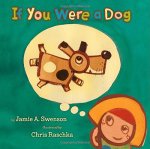
If You Were a Dog
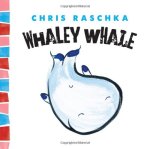
Whaley Whale (Thingy Things)

Give and Take
x
x
Also by Vladimir Radunsky

Advice to Little Girls
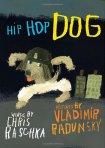
Hip Hop Dog

On a Beam of Light: A Story of Albert Einstein
x
x
x
Review HERE
x
x
x

x
Copyright © 2014 by Sue Morris/Kid Lit Reviews
Filed under:
5stars,
Children's Books,
Historical Fiction,
Library Donated Books,
NonFiction,
Picture Book,
Poetry Tagged:
ABC Book,
alliteration,
children's book reviews,
Chris Raschka,
classic photographs from early 20th century,
formal portraits of children from long ago,
New York Review Children’s Collection,
New York Review of Books,
poetry,
Vladimir Radunsky 







By:
Sue Morris,
on 8/26/2014
Blog:
Kid Lit Reviews
(
Login to Add to MyJacketFlap)
JacketFlap tags:
5stars,
Library Donated Books,
Jean Merrill,
The New York Review Children’s Collection,
mighty trucks,
outwitting an opponent,
pushcarts,
Ronni Solbert,
standing up for what is right,
Middle Grade,
Favorites,
children's book reviews,
middle grade novel,
bullies,
New York Review of Books,
Add a tag
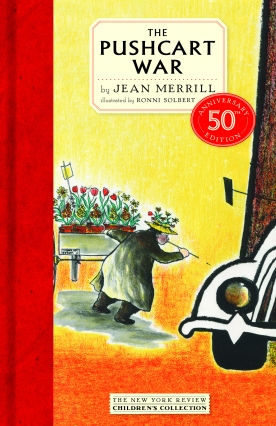
The Pushcart War: 50th Anniversary Edition 
Written by Jean Merrill
Illustrated by Ronni Solbert
The New York Review Children’s Collection 9/16/2014
978-1-59017-819-5
Age 8 to 12 230 pages
x
x
“Do you know the history of the pushcart war? The real history? It’s a story of how regular people banded together and, armed with little more than their brains and good aim, defeated a mighty foe.”
Opening
“The Pushcart War started on the afternoon of March 15, 2026, when a truck ran down a pushcart belonging to a flower peddler.”
The Story
The Pushcart War began on a normal New York City day. The streets were jammed with cars, taxis, and delivery trucks that ranged from the normal size to the mammoth trucks with tires large than your car. It was taking up to four hours to travel four city streets. Tempers are running high, especially for Mack, a truck driver, who, despite his parents being pushcart peddlers, hated pushcarts. That day, with pure intention, deliberately ran into Morris the Florist (no known relation). Thanks to Marvin Seeley’s photo of the onset of the Daffodil Massacre, we know how the war started.
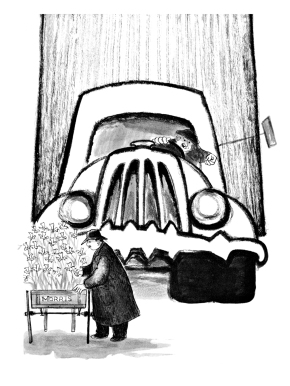 The trucks don’t want the pushcarts on the road and blamed them for the congestion. For some reason, these light, tiny, carts bothered the heavy, huge trucks. The peddlers couldn’t let the attack of Morris the Florist go unanswered, but lacked the funds the truck companies enjoyed. instead of a major affront, the peddlers decided to use pea shooters and pins to deflate the trucks tires, causing mass congestion and anger people to the point of voting trucks off city streets. For a while it worked and no one could figure out how the tires all went bad within minutes of each other. Until a mechanic found a pin.
The trucks don’t want the pushcarts on the road and blamed them for the congestion. For some reason, these light, tiny, carts bothered the heavy, huge trucks. The peddlers couldn’t let the attack of Morris the Florist go unanswered, but lacked the funds the truck companies enjoyed. instead of a major affront, the peddlers decided to use pea shooters and pins to deflate the trucks tires, causing mass congestion and anger people to the point of voting trucks off city streets. For a while it worked and no one could figure out how the tires all went bad within minutes of each other. Until a mechanic found a pin.
A single pin, or many pins does not reveal the culprit. One the newspapers ran the story, children began shooting truck tires for fun, unwittingly taking up the cause for the pushcart peddlers. Unfortunately, Frank the Flower was spotted and arrested for killing a truck tire with a pea shooter. He confessed to all 18,991 flattened tires.
“All 18,991?” asked the Police Commissioner as if he had not heard correctly the first time.
“I cannot be sure down to the last tire,” said Frank the Flower. “But I have been at it several days now.”
“But 18,991 tires!” Aid the Police Commissioner.
“It was nothing,” said Frank the Flower.
Well, kids took up the cause and to stop them the city began taxing tacks, which made the British upset since they are the world’s top producers of tacks. This got Washington involved. New York City becomes embroiled in the Pushcart War, though this name is not used yet. The Big Three Truck Companies: Leaping Lemas, Mighty Mammoths, and Tiger Trucking held a secret meeting to wipe out the pushcarts and the Pushcart King. What will happen to New York City in 2026? Will the pushcarts survive? Will the British calm down? Will Frank the Flower, who single-handedly killed 18,991 truck tires, ever leave his jail cell? What will happen to Mack, the trucker who put Morris the Florist into the hospital and started the war?
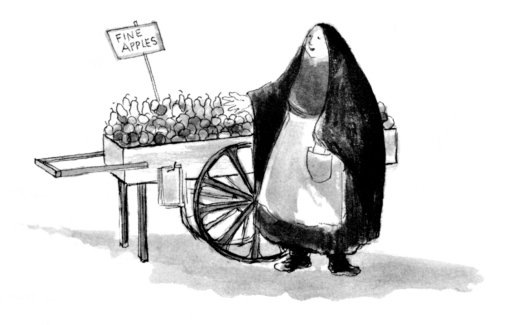 Review
Review
“The Big Three,” comprised of three delivery truck firms LEMA (Lower Eastside Moving Association) also called “Leaping Lemas,” and Tiger Trucking or “Tiger Trucks,” and Mammoth Moving, which used three sizes of trucks: Baby Mammoth, Mama Mammoth, and the Mighty Mammoth. These are the bullies of the story. For once, the bullies are not too big to fail.
The Pushcart War is a fun read. The humor is terrific and kept me groaning and laughing every few pages. The pushcart peddlers are a colorful bunch of characters especially The Pushcart King. The name to Maxie Hammerman because he fixes all of the pushcarts or builds new ones from scratch and is the only one in New York City capable of making the pushcarts correctly. When the trucking bullies decide to kidnap and dispose of The King—thinking he is the mastermind behind the campaign to rid the city streets of their trucks—Maxie has a surprise of his own. This is one of the best scenes of the story. It felt like I was reading the script from the movie called The Sting.
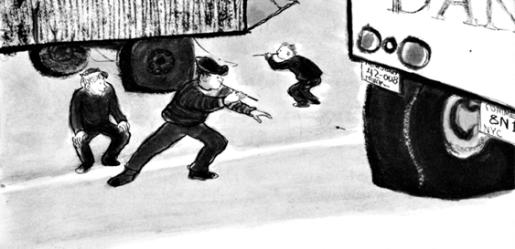
Kids will enjoy this futuristic farce of a “true tale.” The author casts herself as the futuristic novelist reporting on The Pushcart War ten years after the dust has settled and people are ready to hear about the war once more. City kids play a large part in the war, keeping the mayor and police commissioner completely puzzled. Written in 1964, the author envisions a New York City sixty years down the road. I find it interesting that there is no grand technology like cell phones and computers. The biggest difference is the extremely crowded streets, excess number of delivery trucks, and prices remaining similar, if not lower than the prices of her current time. (Apples are 5 cents).
The Pushcart War has style. The illustrations are black and white line art similar to what one would find in a newspaper only upgraded several times over. I love the illustration of Frank the Flower shooting his peashooter for the first time and Mr. Jerusalem who, after struggling over the morality of shooting truck tires, finds he is not only a terrific shot but enjoys his mission. Mr. Jerusalem quickly becomes the top tire executioner.
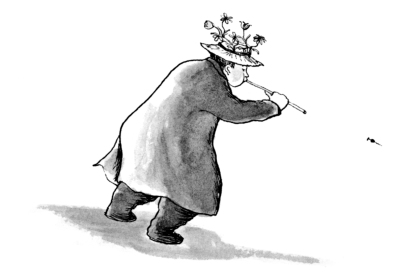 The Pushcart War is a classic tale of the big bully taking on the little guy and finding the littlest guy can outsmart, outthink, outwit the big dumb bully with grace and class. It should be required reading for every middle grade student. There is a little sociology, psychology, criminology, and a few other “ologies” worth reading. I love The Pushcart War.
The Pushcart War is a classic tale of the big bully taking on the little guy and finding the littlest guy can outsmart, outthink, outwit the big dumb bully with grace and class. It should be required reading for every middle grade student. There is a little sociology, psychology, criminology, and a few other “ologies” worth reading. I love The Pushcart War.
THE PUSHCART WAR. Text copyright © 1964/1992 by Jean Merrill. Illustrations copyright © 1964/1992 by Ronni Solbert. Reproduced by permission of the publisher, New York Review of Books, New York, NY.
x
Buy The Pushcart War at Amazon—B&N—Book Depository—New York Review of Books—your favorite bookstore.
Learn more about The Pushcart War HERE
Meet the author, Jean Merrill, from New York Times: http://www.nytimes.com/2012/08/12/books/jean-merrill-childrens-book-writer-dies-at-89.html?_r=0
Meet the illustrator, Ronni Solbert, from NYRB: http://www.nybooks.com/books/authors/ronni-solbert/
Find more classics at The New York Review Children’s Collection website: http://www.nybooks.com/books/imprints/childrens/
The New York Review Children’s Collection is an imprint of The New York Review of Books: http://www.nybooks.com/
x
Also by Jean Merrill and Ronni Solbert
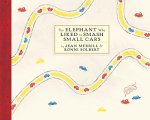
The Elephant Who Liked to Smash Small Cars
3/10/2015
x

x
Copyright © 2014 by Sue Morris/Kid Lit Reviews
Filed under:
5stars,
Favorites,
Library Donated Books,
Middle Grade Tagged:
bullies,
children's book reviews,
Jean Merrill,
middle grade novel,
mighty trucks,
New York Review of Books,
outwitting an opponent,
pushcarts,
Ronni Solbert,
standing up for what is right,
The New York Review Children’s Collection 







By:
Sue Morris,
on 7/31/2014
Blog:
Kid Lit Reviews
(
Login to Add to MyJacketFlap)
JacketFlap tags:
magic,
Children's Books,
Middle Grade,
Favorites,
children's book reviews,
ravens,
middle grade book,
wizards,
New York Review of Books,
5stars,
Library Donated Books,
classic tale,
The New York Review Children’s Collection,
Anthea Bell,
journeyman,
Krabat & the Sorcerer’s Mill,
Otfried Preussler,
Add a tag
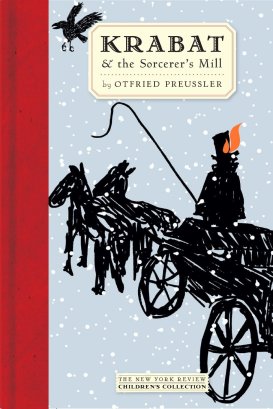 .
.
Krabat and the Sorcerer’s Mill
written by Otfried Preussler
translated from German by Anthea Bell
The New York Review Children’s Collection 9/23/2014
978-1-59017-778-5
Age 9 to 13 258 pages
.
.“New Year’s has passed. Twelfth Night is almost here. Krabat, a fourteen-year-old beggar boy dressed up as one of the Three Kings, is travelling from village to village singing carols. One night he has a strange dream in which he is summoned by a faraway voice to go to a mysterious mill—and when he wakes he is irresistibly drawn there. At the mill he finds eleven other boys, all of them, like him, the apprentices of its Master, a powerful sorcerer, as Krabat soon discovers.
During the week the boys work ceaselessly grinding grain, but on Friday nights the Master initiates them into the mysteries of the ancient Art of Arts. One day, however, the sound of church bells and of a passing girl singing an Easter hymn penetrates the boys’ prison: At last they hatch a plan that will win them their freedom and put an end to the Master’s dark designs.”
Opening
“It was between New Year’s Day and Twelfth Night, and Krabat, who was fourteen at the time, had joined forces with two other Wendish beggar boys.”
The Story
Krabat has a strange dream he feels he must follow. The next day he slips away from the other two boys in his vagabond group and goes to the mill of the sorcerer. Krabat and eleven other boys work grinding grain for long days and nights. It is hard work and Krabat has a difficult time keeping up, until Tonda, the lead journeyman and Krabat’s new best friend, lightly touches Krabat while uttering a few words under his breath. Suddenly, Krabat can work as if he gained the strength of many men; the work is still laborious, yet Krabat can work with ease. Krabat has been with the mill almost one year when Tonda dies. Days later, Krabat, now three years older, becomes a full journeyman and a new boy replaces Tonda, sleeping in his bed and wearing his old clothes, just as Krabat had done one year earlier, though he did not know this until the new apprentice arrived that he slept in the bed and wore the clothes of the journeyman he replaced.
Year 2 is not much easier for Krabat. He thinks of Tonda regularly, who, in a dream, tells Krabat to trust Michal. Michal is similar to Tonda and helps Krabat when he needs help. The millwork is still long and hard, but he can easily get through it with the magic the Master teaches his little ravens in his Black School. Once a year, the boys mark each other with the sign of the Secret Brotherhood, pass under the yoke at the door, and take a blow to the check delivered by the Master, reaffirming their roles for another year.

Various Covers, pt. 1
Year 3 sees Krabat ready to leave the mill. He tries to leave three times and three times, he finds himself back in the mill. He runs to the east as far as he can run—but is still on the grounds of the mill. Krabat runs to the north—only to be at the mill. Krabat can escape but one way—death. Year three’s new apprentice is one of the friends Krabat left when called to the mill. The young boy recognizes the name Krabat, tells of having a friend by that name, but does not recognize Krabat who is now many years older than the boy is. Krabat takes his friend under his wing; much like Tonda had done for him.
Krabat cannot let go of the voice of a young singer from the village. Girls and journeymen of the Master’s mill tend to end in tragedy for at least the girl—including Tonda’s girl—and often the boy as well. Krabat knows this, yet still wants to meet this girl. She could become his savior, except no one has ever outwitted the Master. With the help of a couple of other journeymen, Krabat sets about a plan to gain not only his freedom, but also that of the other journeymen as well. This would mean the end of the mill, the end of magic, and the end of the Master. The Master has his own plan involving Krabat; an offer Krabat should find hard to resist yet does. Instead, Krabat places his life in the hands of the village girl. Can this girl pull off what no one before her could?

Various Covers, pt. 2
Review
I have never been disappointed by a New York Review Children’s Book and Krabat & the Sorcerer’s Mill is no exception. When originally written in 1971, winning many children’s book prizes, some of the German words were archaic and difficult, especially for American children. The translator replaced those words, never losing the story or its basic scheme of horror, love, and friendship between those held in bondage. It is easy to understand why Neil Gaiman calls Krabat & the Sorcerer’s Mill “one of his favorite books.”
After his dream, when Krabat is walking to the mill, each person he asks for directions or simply meets, tells him to stay far away from the mill. The villagers tell him dark, strange things occur at the mill; yet Krabat ventures on, compelled to find this it. For a beggar boy the mill must seem like Heaven. Krabat gets a warm bed and filling meals that do not scrimp on meat. No more singing for his supper and traveling on foot from village to village is indeed a blessing. But the work grinding grain from dusk to dawn is laborious and leaves Krabat exhausted. Then an older boy, Tonda, steps up to help Krabat. Krabat must keep Tonda’s help secret, as the Master would not be pleased his new apprentice received assistance.
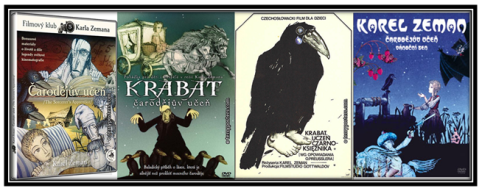
Movie Posters
The Master is unsympathetic, mysterious, and dangerous. He has secrets of his own. With only one eye, the Master seems to be able to see everything, regardless of where it might occur. Many times, he follows Krabat into town, showing up as a one-eyed raven, or a one-eyed horse, and even a one-eyed woman, all with a black patch over the useless eye—that he cannot disguise. Krabat sees these creatures but never makes the complete connection as to it being the Master.
Krabat & the Sorcerer’s Mill will delight kids who like adventures, mysteries, and magic. Though the Master deals in the black arts, there is nothing in the story that will scare anyone. At times, the writing feels long, and at times, it is long, yet never arduous or out of place. Preussler spins a tale so complete one wonders if such goings on really occurred in seventeenth-century Germany. Krabat & the Sorcerer’s Mill will keep kids entranced as they read this gothic tale of orphaned boys finding a home with a dangerous wizard. I enjoyed every word of this captivating story. Krabat & the Sorcerer’s Mill tends to be best for the advanced reader. Adults will also immensely enjoy this alluring tale.
KRABAT & THE SORCERER’S MILL. Text copyright © 1971 by Otfried Preussler. Copyright © 1981 by Thienemann Verlag. Translatation copyright © 1972 by Anthea Bell. Published in 2014 by the New York Review of Books.
.
Purchase Krabat & the Sorcerer’s Mill at Amazon —B&N—Book Depository—New York Review of Books—at your favorite bookstore.
—B&N—Book Depository—New York Review of Books—at your favorite bookstore.
Learn more about Krabat & the Sorcerer’s Mill HERE.
Meet the author, Otfried Preussler, at his website: http://www.preussler.de/
Meet the translator, Anthea Bell, bio wiki: http://en.wikipedia.org/wiki/Anthea_Bell
Find other classic children’s books at the New York Review Children’s Collection website: http://www.nybooks.com/books/imprints/childrens/
New York Review Children’s Collection is an imprint of the New York Review of Books. http://www.nybooks.com/
Originally published in 1972, under the title The Satanic Mill.
.
Also by Otfried Preussler, (soon to be published by NYRB)
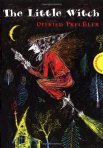
The Little Witch

The Robber Hotzenplotz
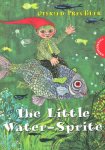
The Little Water Sprite
Also Translated by Anthea Bell
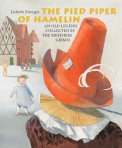
Pied Piper of Hamelin
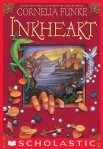
Inkheart (Inkheart Trilogy)
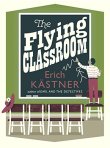
The Flying Classroom (Pushkin Children’s Collection) 3/10/2015
m
m
m
m
m
m
m
m
m

m
m
copyright © 2014 by Sue Morris/Kid Lit Reviews
Filed under:
5stars,
Children's Books,
Favorites,
Library Donated Books,
Middle Grade Tagged:
Anthea Bell,
children's book reviews,
classic tale,
journeyman,
Krabat & the Sorcerer’s Mill,
magic,
middle grade book,
New York Review of Books,
Otfried Preussler,
ravens,
The New York Review Children’s Collection,
wizards 







 The New York Public Library (NYPL) has acquired the archive of the New York Review of Books magazine. This publication garnered great fame for featuring pieces by several beloved writers such as W. H. Auden, Joan Didion, and Norman Mailer.
The New York Public Library (NYPL) has acquired the archive of the New York Review of Books magazine. This publication garnered great fame for featuring pieces by several beloved writers such as W. H. Auden, Joan Didion, and Norman Mailer.





























